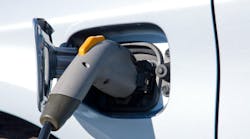When it comes to cutting on-road vehicle emissions, it has been said tin recent years that as California goes, so goes the nation. Certainly reflecting in part the truth of that new axiom, the U.S. Dept. of Transportation (DOT), the U.S. Environmental Protection Agency (EPA) and the State of California have announced a single timeframe they will use when proposing fuel economy and greenhouse gas standards (GHG) for model year 2017-2025 cars and light-duty trucks.
Proposing these standards on the same timeframe-- by September 1, 2011-- signals continued collaboration that could lead to an extension of the current National Clean Car Program, the federal and state partners stated in a joint news release.
Accordingly, this approach would provide “automakers certainty as they work to build the next generation of clean, fuel efficient cars. Improving fuel efficiency will save consumers money at the pump, reduce America's dependence on foreign oil and cut emissions of harmful pollutants.”
"The single timeframe is another great example of the cooperation that has led us to strong and achievable standards for clean cars in America," said EPA Administrator Lisa P. Jackson. "I'm proud to be working with my federal and state partners on this next step in the process to make the U.S. the world leader in fuel efficient clean cars."
“Today’s announcement is a big step forward, but it is only the beginning. By working together with EPA and the California Air Resources Board (CARB) to develop standards for the next generation of clean cars, we can set a standard that works for automakers across the country,” said DOT Secretary Ray LaHood. “Our continued collaboration is win-win-win for the environment, businesses and the American consumer.”
“President Obama's invitation last year to join with the federal agencies to develop new emission and fuel economy standards has resulted in a model of government cooperation to address the important issues of global climate change and urban pollution,” said Mary Nichols, Chairman of CARB.
In April 2010, DOT and EPA established greenhouse-gas emission and fuel-economy standards for model year 2012-2016 light-duty cars and trucks. In the fall of 2010, California accepted compliance with these federal GHG standards as meeting similar state standards as adopted in 2004. This action resulted in the first coordinated national program. The standards require these vehicles in model year 2016 to meet an estimated combined average emissions level of 250 grams of carbon dioxide per mile-- which is equivalent to running at 35.5 mpg.
A month later, in May 2010, President Obama announced that EPA, DOT and California would begin working together to assess the performance and costs of a variety of technologies that could be available in model years 2017-2025 as the first step in possibly extending the current national emission and fuel economy standards. The three agencies reported they have completed an “interim technology assessment and have since funded additional research critical to future rulemaking.”
Per the joint announcement, CARB is committing to continue its collaboration with DOT's National Highway Traffic Safety Administration (NHTSA) and EPA “to establish standards that will provide manufacturers with the regulatory certainty needed to invest today in the kind of new technologies that will provide consumers a full range of efficient clean vehicle choices.”
CARB has previously announced its intention to propose GHG emission standards for model years 2017 to 2025 in March of this year, while EPA and NHTSA were working on an end of September timeline for their proposal. “Today's announcement ensures that both proposals will come out simultaneously after a thorough, joint review of all data available when the proposals are issued,” the government partners stated.
“Auto manufacturers are responding to these goals through the increased domestic production and use of existing, advanced, and emerging technologies to strengthen the auto industry and enhance job creation in the United States,” the news release added.


